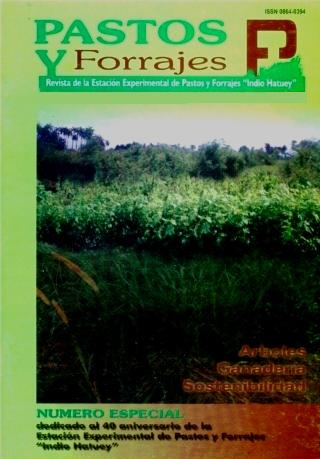DETERMINACION DE LA DOSIS OPTIMA DE AMONIACO EN EL TRATAMIENTO DE LA CASCARILLA DE CITRICO DESHIDRATADA
Keywords:
Ammonia, citrus fruit shell, non-proteic nitrogenAbstract
An experiment was conducted with the dehydrated citrus fruit shell in order to increase the NPN in it and determine the most efficient dose of ammonia. This by-product was treated with 1,1 (T1); 2,2 (T2) and 3,3 % of ammonia (T3) in aqueous form during 4 weeks. The indicators measured were: DM, CF and total and insoluble CP. The evaluations were carried out at the moment of opening and after 3 and 7 days of exposition to air. DM contents were reduced with the inclusion of ammoniacal water,
although after 7 days the percentages were stabilized (x̅ =89,86 %). CF did not vary in the treatments with ammonia regarding the control. Total CP (T1=12,34; T2=18,32; T3=22,27 %) and insoluble CP (T1=2,58; T2=4,22; T3=8,72 %) were increased in direct proportion to the ammonia doses. This situation was maintained after 7 days of opening in the total CP (T1=11,98; T2=16,92; T3=18,32 %)
and in the insoluble CP (T1=11,19; T2=15,92; T3=16,34 %). Nevertheless, the retention percentages resulted to be better after 7 days of exposition in the treatments T1 (90,06 %) and T2 (89,70 %) in relation to T3 (79,33 %). It is concluded that the 2,2 % dose was the most convenient and that this byproduct has good characteristics for being treated with ammonia.








